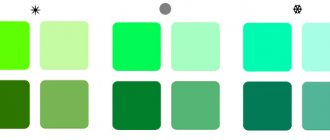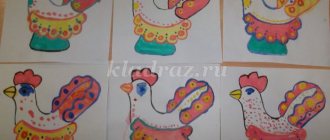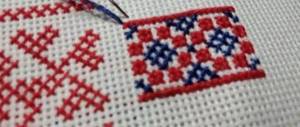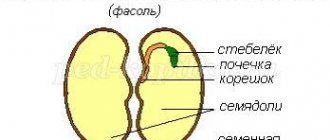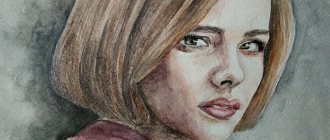Still life in graphics lesson plan in fine arts (art, 6th grade) on the topic
Subject: Fine arts.
Lesson topic: Still life in graphics.
Class: 6
Purpose of the lesson: To show students that a line can express the emotional and spiritual state of a drawing, to teach artistic and technical techniques in depicting a still life.
Lesson objectives:
Developmental: Teach to see changes in the image of a picture, placing spiritual problems of the development of feelings and emotions at the center.
Educational: Acquiring skills and creative experience by making engravings with stickers on cardboard and obtaining impressions.
Educational: Nurturing artistic and aesthetic taste, the need to master knowledge about genres and technical means of their achievements.
Lesson type: combined
Teaching method: explanatory-illustrative, reproductive, partially search.
Visual range: children's work, presentation, demonstration by the teacher on the board.
Musical series: Tchaikovsky P.I. “Seasons”.
Materials and supplies for the lesson: paper: A-3 and A-4 format, pencil, textbook, gel pen, cardboard, scissors, cutter, glue, one-color gouache, photo roller, spoon.
During the classes
- Organizational moment (1 min)
Checking students' readiness for the lesson
II. Communicating the topic and objectives of the lesson (2 min)
— What genre of fine art are we studying in this quarter? (still life)
1 slide. Still life by Van Gogh "Sunflowers"
— What is a still life? (children's answers).
2 slide. Definition of still life.
The British call still life “quiet life.” The topic of today's lesson is encrypted on the board. You guys have to answer, which still life is the odd one out here? Why?
3 slide. encryption. Lesson topic: “Still life in graphics.”
III. Repetition of learned material (7 min)
4 slide. What is depicted in a still life? (children's answers)
If you see a samovar on the table in the picture, or grapes in a basket, or a rose in crystal, or a bronze vase, or a pear, or a cake, or all the objects at once - know that this is a still life.
The things we use form their own environment in a still life. Composition is of great importance. The composition expresses the main thought of the artist, the idea of the painting.
5 slide. Composition.
The composition of a still life should include objects of various shapes, sizes, textures and colors to make the picture more interesting. We must learn to see the beauty of ordinary things and develop our compositional thinking.
Now, you will try to create a composition yourself from the proposed items on your table. Discussion.
IV. Learning new material (10 min)
We will imagine that the artist has a graphite pencil in his hand. In what form of fine art can an artist apply it? (children's answers)
Slide 7 Definition of graphics.
If in painting the first place is given to color and the color it creates, and drawing plays a necessary but still auxiliary role, then in graphics the role of drawing is decisive. Drawing is the main type of graphics.
8 slide. Drawing.
What are the means of drawing? (children's answers)
Slide 9 Lines, dot, stroke, spot.
What materials do graphic artists use? (children's answers)
10 slide. Material.
All varieties of drawing techniques that have come down to our time mainly developed during the Renaissance in Italy. Even then, lead, silver, and other metal leads (pins), graphite, Italian pencil, sanguine, charcoal, chalk, pastel, as well as liquid materials - bistre, ink, multi-colored ink, watercolor, white were used in drawing. They painted with goose and reed feathers and brushes on white paper of various colors, tinted and primed. All this led to an exceptional wealth of artistic and technical techniques.
11 slide. Reproductions of paintings (still lifes in graphics).
But when painting in black and white, you must also strive to convey not only the shape, but also the varied colors of objects and their texture.
12 slide. Take a closer look at these images of objects in a still life, how do they differ from each other? (children's answers)
a) flat tonal solution;
b) volumetric tonal solution.
How can an artist achieve the transfer of volume of objects? (children's answers)
Slide 13 Tone, highlight, shadow, etc.
But there is also a special type of graphics - printed graphics. In this case, from one drawing made with special cutters on a board made of wood, metal or linoleum, you can make several author's prints - impressions. This type of graphics is called Engraving. The principle of the imprint itself was known for a very long time, because even the kings of antiquity had rings with seals. Later the engraving appeared in books and magazines.
Slide 14 Engraving can be different: on wood - woodcut, on metal - etching, on linoleum - linocut, even on stone - lithography.
In these cases, the graphic artist uses such complex devices for his work as a printing press, special cutters, metal plates for etching them with acid, and much more. All this is needed to create printed graphics.
Physical education minute.
They raised their hands up and shook them, closed their hands back, stood up, shook themselves, smiled at everyone and sat down to work again.
V. Reinforcement of material 5 (min) We repeated and learned many new concepts. And to consolidate, let’s try to apply our knowledge in practice.
If we pick up a book or a postcard, what type of graphics is in front of us? (children's answers)
VI. Artistic and creative activity of students (15 min) Task: Make an engraving with stickers.
First, come up with a still life, choose a theme and plot, and make a sketch. Cut out the components from cardboard. Place them on a sheet of thick cardboard of different thicknesses, but not layered. Glue the largest parts first, and then the small elements. This will be a matrix with which you can make prints. Use a roller to apply wet paint to the cardboard with stickers, press down on a clean sheet and rub it in with a spoon. Carefully remove the sheet. Make a second impression. Students' work is accompanied by musical accompaniment.
VII. Analysis of work, grading, summing up (5 min)
You see several unfinished sentences, continue any of them at your discretion. Suggestions: Today in class we learned... We learned... I especially liked...
Exhibition of the best works, grading.
D\z. Find and bring reproductions of a still life in graphics.
The lesson is over.
